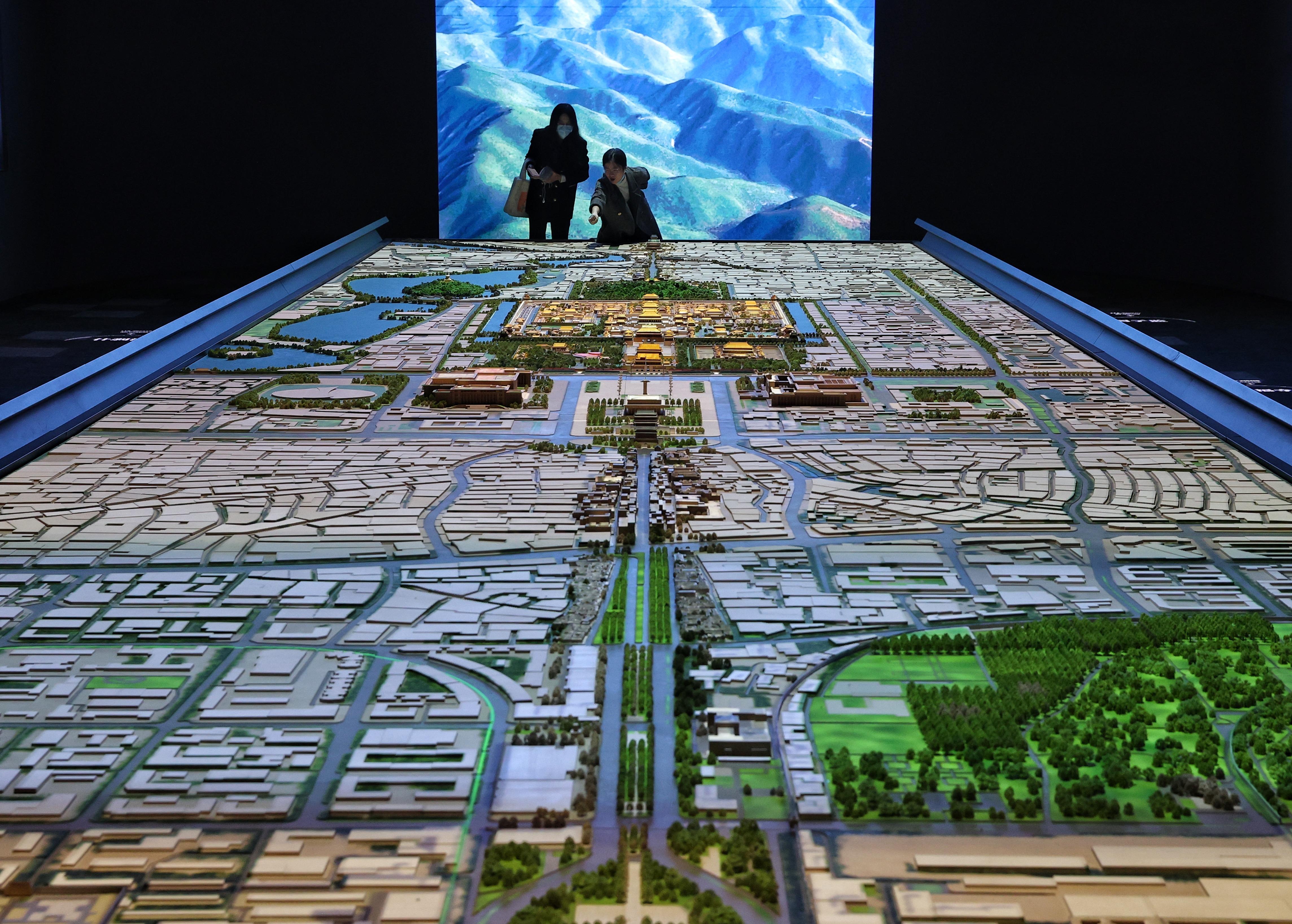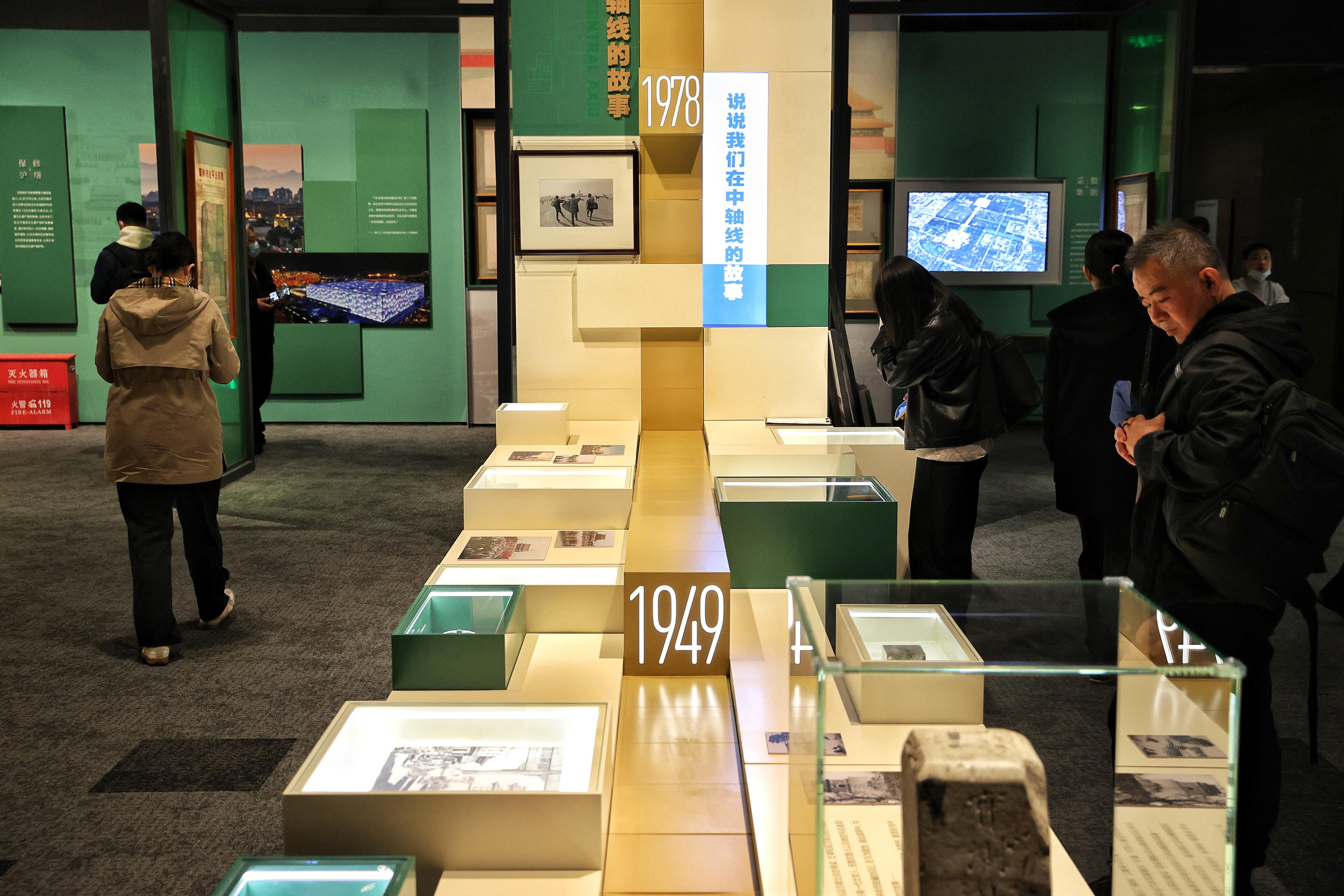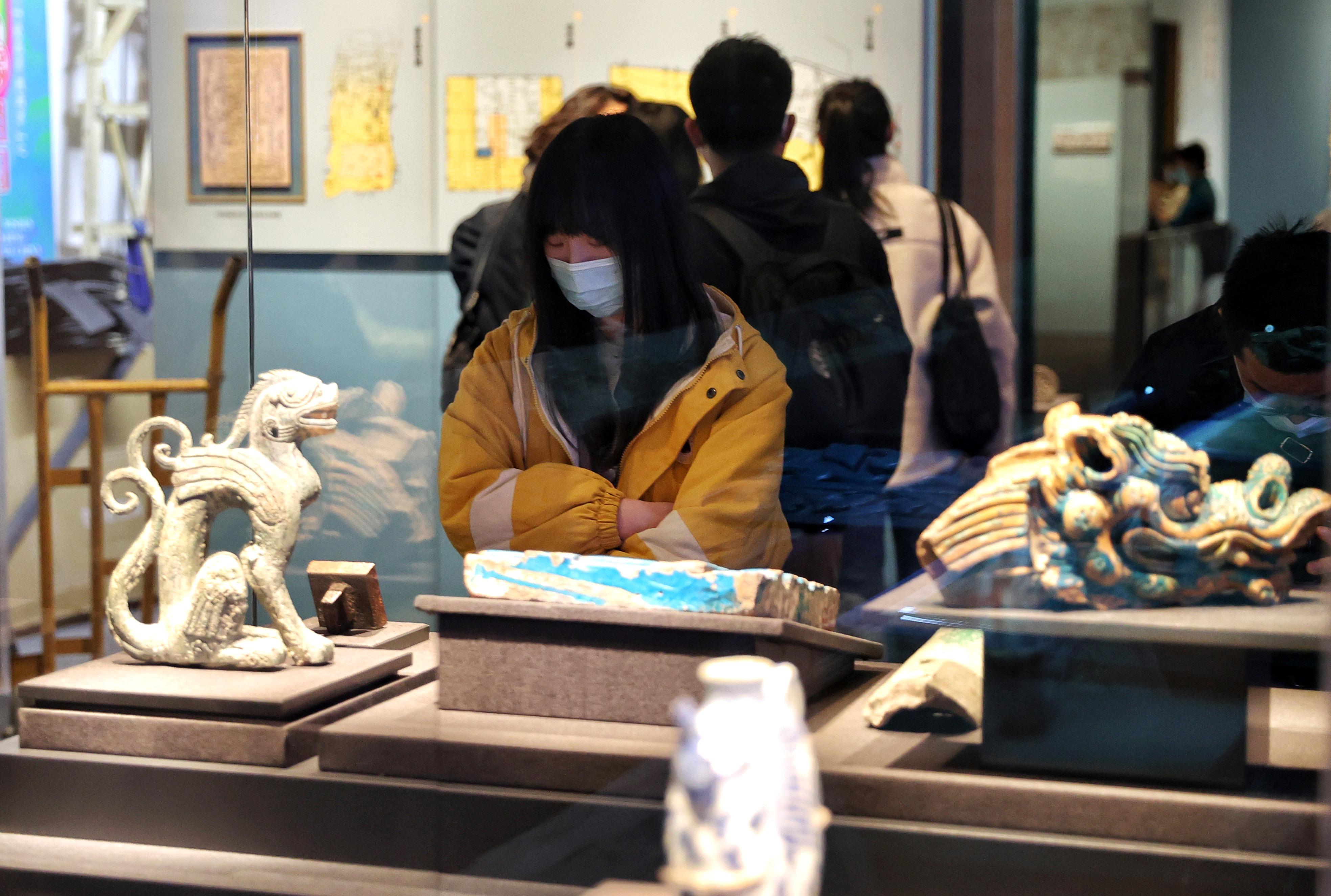Exhibition on Beijing's Central Axis highlights its history and relevance to today's society, Cheng Yuezhu reports.
 A 16-meter-long architectural model is a major display at the Beijing Central Axis exhibition that opened late last month at the Capital Museum in Beijing. (JIANG DONG / CHINA DAILY)
A 16-meter-long architectural model is a major display at the Beijing Central Axis exhibition that opened late last month at the Capital Museum in Beijing. (JIANG DONG / CHINA DAILY)
Dimly bathed in a sea of blue light, the dark exhibition hall is dotted with stars and constellations, spinning and expanding, forming circular trails on the wall at the far end of the hall.
From the star trails emerge a simplified outline of central Beijing, and a ray of light beams down from the wall and runs through the hall, revealing an architectural model of the ancient capital on the gigantic table placed at the room's center.
We’d like to present the vibrant cultural phenomena and activities that have taken place on the Central Axis of Beijing.
Tan Xiaoling, deputy director of Capital Museum
With the solemn background music escalating, in an instant, the entire hall shifts from night to day, and then from spring to winter. Nuances of these changes are subtle and gradual, yet it is easy to tell what season it is from the hues of the cityscape.
The 16-meter-long model, built to a scale of 1:500, offers a panorama of Beijing's Central Axis — the core structure of the ancient capital that runs 7.8 kilometers from south to north.
Apart from the 3D projection technology that presents the passing of time and changes of scenery, small screens can be found on the sides of the table, providing animated and textual introductions of the major heritage sites along the way, such as the imperial palace, the Forbidden City, and the hill at the center of Jingshan Park.
The architectural model is one of the major displays at the Beijing Central Axis exhibition that opened on March 28 at the Capital Museum in Beijing.
"All around the country, this is the first time that the Central Axis of Beijing is displayed in front of an audience in its entirety. For ordinary people, it is unusual to get such an impressive bird's-eye view," says the exhibition's designer Zhong Mei.
"By presenting the changes of seasons, we would like the visitors to feel what the Central Axis meant to ancient Chinese people, as well as their views of heaven, earth, humans, the universe and time."
Comprising three sections — a majestic, a cultural and an eternal Central Axis, the exhibition tells of its history, philosophy and transformation.
Zhang Wenyong, curator of the exhibition, says that the Central Axis of Beijing embodies an ideal concept of urban planning in the minds of ancient Chinese people, precisely because it reflects their appreciation of "centrality".
"By exploring ways of tracking time and identifying direction to support their everyday life and production, ancient Chinese gradually developed a value of 'respecting the central location'," Zhang says.
Some of these time-tracking devices are displayed at the exhibition, among the total 53 cultural artifacts from 17 museums and research institutes, such as a nie, a crude form of sundial from the Neolithic Age, and a jade gui, a ruler for measuring the shadows of the gnomon.
"Determining the central spot lays the basis for measuring and tracking time. The center is also in a state of equilibrium, keeping equal distances from all sides, therefore centrality is also associated with harmony," Zhang adds.
 The exhibition in Beijing includes a section that gathers old photos and everyday items that are associated with the Central Axis. (JIANG DONG / CHINA DAILY)
The exhibition in Beijing includes a section that gathers old photos and everyday items that are associated with the Central Axis. (JIANG DONG / CHINA DAILY)
The appreciation of centrality is later extended to embody societal order, and is reflected in the urban planning of Chinese capitals, meaning that the imperial palace should be placed at the center of the capital, and other buildings are laid out along a central axis.
According to Zhang, ancient Beijing is an exemplar of these concepts, featuring a symmetrical layout, with the imperial government in front of the imperial palace and the market at the back, the Imperial Ancestral Temple on its left and the Altar of the Land and Grain on the right.
The history of Beijing's Central Axis dates back to the 13th century, when the then capital Dadu of the Yuan Dynasty (1271-1368) adopted a 3.75-km axis comprising palaces, gates and bridges.
It continued to be improved upon in the following centuries, and has evolved into a heritage structure ensemble that contains ancient imperial buildings, city management facilities, ceremonial venues, as well as historical bridges and streets.
In modern days, the imperial palaces and temples have become public venues, such as museums, parks and plazas, and more venues are built on the axis' extensions, including Beijing Daxing International Airport and Beijing Olympic Park.
The Beijing municipal government has also released a number of policies and regulations to preserve the heritage sites, and has been working with institutions and organizations to increase public awareness and involve citizens in using and protecting these sites.
"When designing the exhibition, the team held a lot of discussions and explorations. We feel that for visitors, seeing the cultural artifacts alone doesn't offer a clear understanding of the cultural significance of the Central Axis," Zhong says.
"So, we provided a lot of explanations and interactive devices for the visitors to explore and experience, which helps them better understand the meaning and theme of our exhibition."
 A visitor views an ancient dragon ornament at the exhibition. (JIANG DONG / CHINA DAILY)
A visitor views an ancient dragon ornament at the exhibition. (JIANG DONG / CHINA DAILY)
These interactive installations include a hanging scroll of a map. By spinning the wheel device beside it, the visitors can scroll up or down, select a specific site they would like to learn about, and read about its history on the screen placed on top of the scroll.
After viewing the exhibition, the visitors will arrive at a digital photo booth. On the floor, an outline of the Central Axis is drawn. By standing on different spots along the line, the visitors get to choose a representative landmark to their liking, which will appear on the screen as the photo background.
They can then strike a pose, get their photos taken after the countdown, and download the photos by scanning the QR code outside the booth.
Before the opening of the exhibition, the museum also gathered from the public old photos and everyday items that are associated with the Central Axis.
These old objects include an enamel mug with a picture of the Temple of Heaven, a notebook with printed image of Tian'anmen Square, and a ticket to the Spring Festival gala in the 1980s.
"Seeing these old objects will remind the visitors that the Central Axis is truly closely connected with their everyday lives. It's a way of deepening people's experience and emotional connection with the Central Axis and Beijing," says Tan Xiaoling, deputy director of Capital Museum.
"Perhaps ancient capitals are often considered remote and solemn, but from this exhibition, we'd like to present the vibrant cultural phenomena and activities that have taken place on the Central Axis of Beijing, and the effort our country and people have made to inject new energy into their heritage."
Contact the writer at chengyuezhu@chinadaily.com.cn


